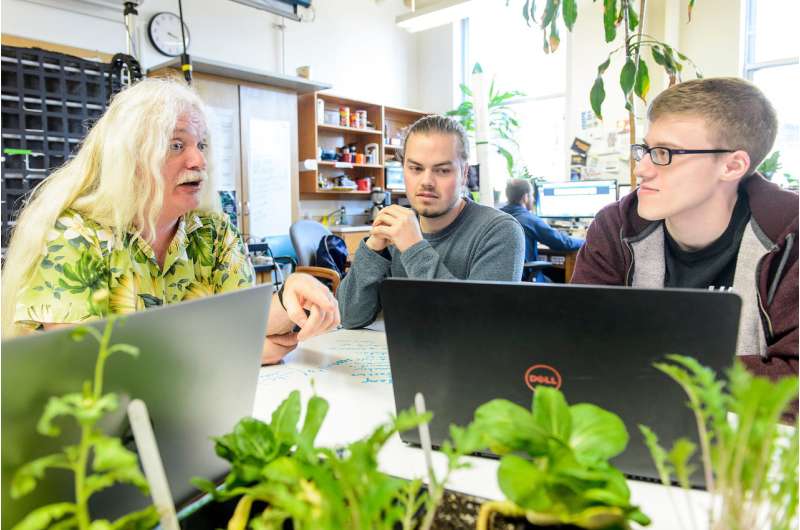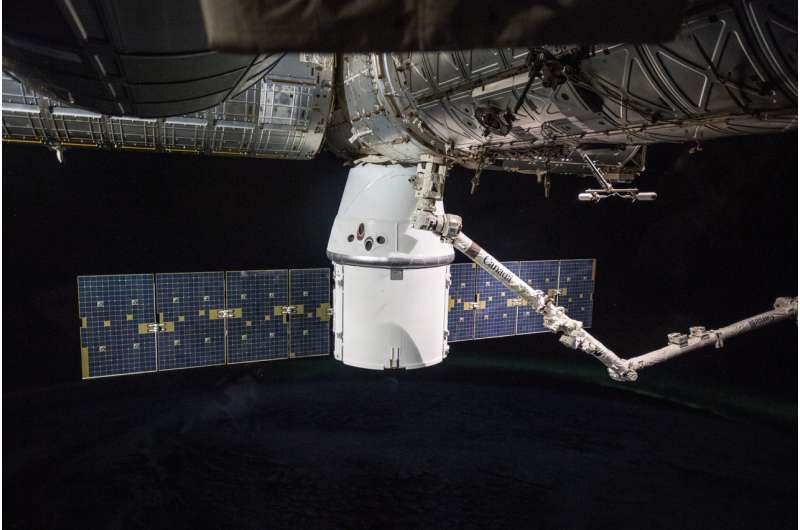Simon Gilroy, professor of botany at UW–Madison, meets with his graduate students in Birge Hall in March 2018. Credit: Bryce Richter
Jeans are thirsty. The fibers making up their denim come from water-guzzling cotton plants, and plant scientists are on the hunt for ways to make this vital fiber more sustainable.
So, naturally, they're sending cotton plants into space.
University of Wisconsin–Madison botanist Simon Gilroy will study cotton seedlings grown on the International Space Station in an effort to better understand the important crop's growth back on Earth. Gilroy's proposed experiment was one of three winners selected by a cotton sustainability research challenge sponsored by Target and organized by the nonprofit Center for the Advancement of Science in Space, or CASIS.
"The goal is to understand root system growth to help understand how to generate cotton with roots that grow deep to scavenge water more efficiently and also sequester more carbon in the soil," says Gilroy.
"The project gives us an unprecedented opportunity to ask how gravity governs cotton root growth," he says.
Gilroy's team will study a cotton variety that, on Earth at least, resists stresses like drought better than most cotton. Researchers believe this drought resistance stems from roots that are better able to explore the soil for water and nutrients. Since root growth is affected by gravity, Gilroy's experiment will ask how the absence of gravity affects the cotton plant's growth, stress response and root behavior. That information may help researchers understand how to develop cotton plants that use water more efficiently.
The Dragon Resupply Ship, pictured on a previous mission, will deliver Gilroy’s cotton seeds to the International Space Station. Credit: NASA
Twenty-five million metric tons of cotton are grown around the world each year, and each kilogram requires thousands of liters of water to produce. CASIS developed the ISS Cotton Sustainability Challenge to address this environmental impact. The other winners are Marshall Moutenot of Upstream Tech in Alameda, California, and Christopher Saski of Clemson University in Clemson, South Carolina.
Launches are tentatively scheduled for early 2019.
Learn about more of UW–Madison botany professor Simon Gilroy’s experiments with plants in space. Credit: University Communications / UW–Madison
Provided by University of Wisconsin-Madison























